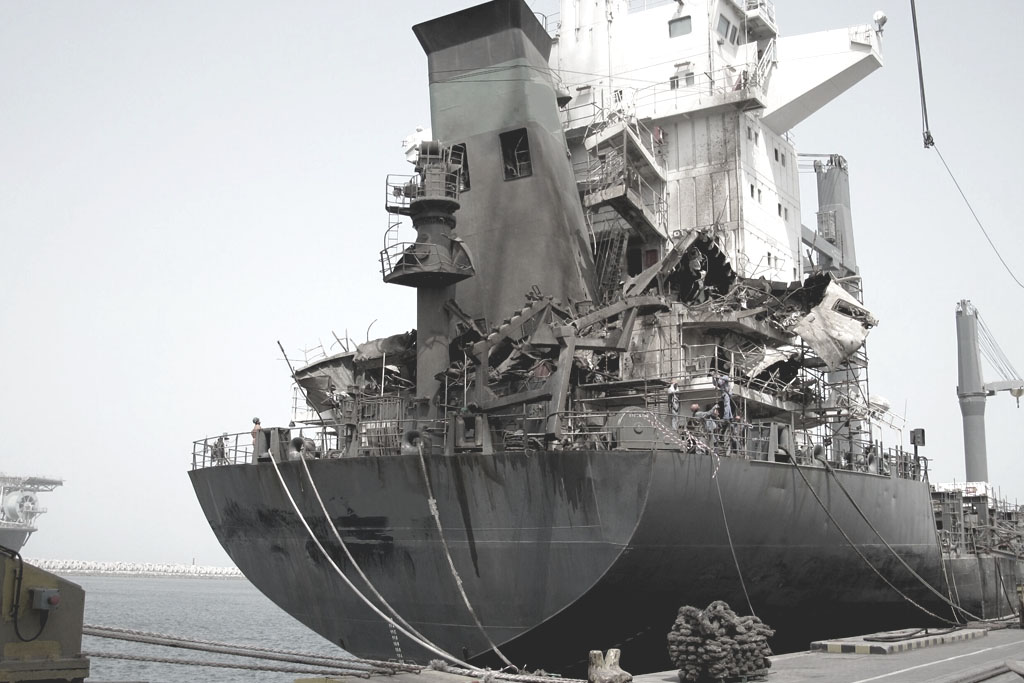CASE STUDY
Marine Boiler Explosion
| PLANT LOCATION | Middle East |
| FACILITY DESCRIPTION | Trading Vessel |
| BOILER TYPE | Vertical Firetube |
| BOILER CAPACITY | 4.5 [TPH] |
| STEAM CONDITIONS | 8 [Bar] @ Sat[°C] |
Conditions:
A small low pressure (8 [Bar]) waste heat recovery boiler installed at the back end of the main propulsion engine of a trading ship exploded at sea shortly after the boiler had been serviced. The explosion caused extensive damage to the ship and prevented it from sailing under its own power. It was towed to a nearby port where it was laid up for over 12 months for repair.
Design Boiler (DB) was engaged by the vessel’s insurance company to investigate the incident and determine the cause of the explosion. A DB boiler engineer was dispatched to the port were the ship was laid up. Upon arrival he inspected the boiler as the first stage in a detailed forensic analysis looking for any clues that might indicate the possible cause of the explosion.
Following extensive analysis of the available evidence DB was able to establish that the boiler had been pressurised to in excess of 2.5 times its design pressure just prior to its catastrophic failure and that this was the most likely cause of the explosion. This excessive pressure was due either to the failure of the safety valve (considered unlikely) or a failure to remove safety valve gags following the boiler’s servicing just prior to the explosion. Because the boiler was heated entirely by waste heat from the engine exhaust there was not automatic pressure control. In the absence of the engines being shut down the only facility preventing the boiler from over pressurising was the safety valve.
Design Boiler has investigated a significant number of boiler explosions in both marine and on shore installations.

